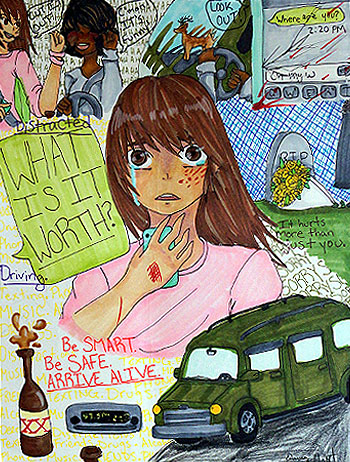
In September 2019, the state of Maine passed a law making it illegal to drive while using a mobile telephone or handheld electronic device.
The fine for a single traffic infraction can be as much as $250 with fees and surcharges, but the end result can be much more costly. Each year, nearly 4,000 people die in crashes involving a distracted or inattentive driver and approximately 400,000 injured in the United States.
Roughly one-third of the total accidents in Maine are caused by distracted driving.
When texting, drivers take their eyes off the road for an average of five seconds. At 55 miles per hour, this results in a car traveling the length of a football field, including end zones, without looking at the road. Those who text while driving are 20 times more likely to get in an accident than those who keep their eyes on the road. Those that talk on the phone are seven times more likely to become a statistic.
Forty-eight states, plus the District of Columbia, have passed laws banning texting while driving. Twenty states, plus the District of Columbia, ban the use of handheld devices while driving. And no matter where in the U.S., truck and bus drivers cannot send or read text messages while driving. It is for good reason that these laws have been written.
In September 2008, a crash between a commuter train and an oncoming freight train killed 25 people in California. Federal investigators found that the conductor, who was distracted and ran a red light, sent a text message 22 seconds before the accident occurred.
In May 2009, more than 50 people were injured when a trolley car in Boston crashed while its driver was texting with his girlfriend.
In 2015, 42% of high school students who drove in the past 30 days reported sending a text or email while driving.
An estimated 80 percent of accidents and 65 percent of near-accidents involve some form of driver distraction occurring within three seconds of the crash. Today, many insurance companies are researching driver phone usage before accidents to help determine liability.
There are three main types of distraction:
- Visual — taking your eyes off the road
- Manual — taking your hands off the wheel
- Cognitive — taking your mind off what you’re doing
Distractions that have been known to cause accidents include:
- Use of cell phone
- Use of GPS system
- Changing the radio
- Eating
- Applying make-up
- Brushing your teeth
- Reading
- Writing
- Reaching for an object in the vehicle
- Fooling around with friends
At the Law Offices of Joe Bornstein, we see firsthand the results of distracted driving accidents. The next time you’re behind the wheel, save the distractions for a time when it’s safe to do so, such as the side of the road or at your final destination.


